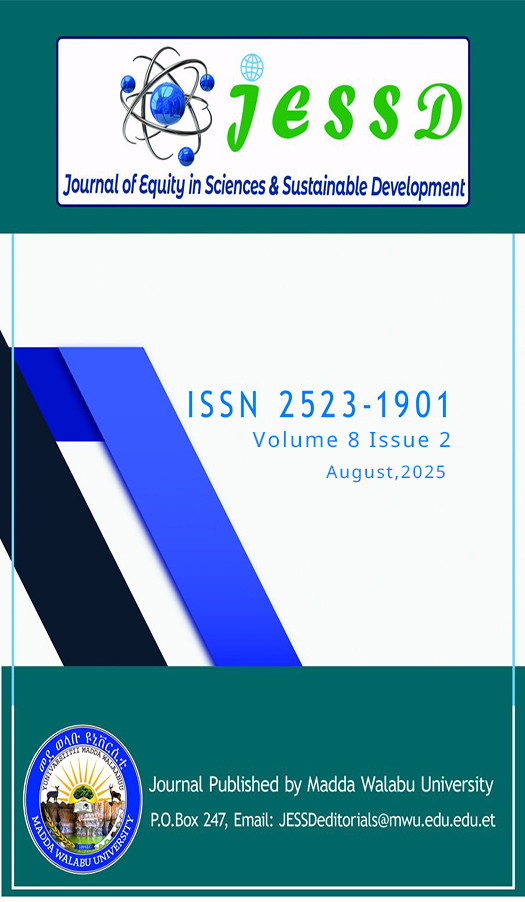Fungal Flora of Wheat (Triticum aestivum L.) and Faba bean (Vicia faba L.) Collected from Uraga District, Oromia Region, Ethiopia
DOI:
https://doi.org/10.20372/mwu.jessd.2025.1577Keywords:
Agar plate method, Fungi, Seed infection, Silos, Storage, TemperatureAbstract
Fungal infection of grains’ seed could affect the quality and quantity of seeds under storage conditions. Therefore, this study was intended to determine the fungal genera associated with wheat (Triticum aestivum L.) and faba bean (Vicia faba L.) under storage conditions. Agar-plate technique was used to isolate fungal pathogens associated with wheat and faba bean grains samples. In the faba bean, the variability of fungal infections varied from 10.00 to 16/plate and 1 to 7 in the wheat. About 18.18, 27.27, and 27.27% of faba bean seeds were infected with 4, 3, and 2 genera of fungi, respectively. On wheat seeds, the highest fungal infection was found in a sample collected from Suke (SK), followed by Laco Torka (LT) kebele. The number of fungal colonies/samples was the highest in both wheat and faba bean samples of SK kebele, showing a significant difference (P<0.05) from the other kebeles. The relative frequency (RF) of a fungal isolate occurrence was in the range of 1.96 to 19.61% in wheat seeds, with the highest value in SK (19.61%) Kebele. The percentage of seed infection (PSINF) was highest in SK for both wheat (100%) and faba bean (87.00%) with significant variations (P<0.05). In wheat samples, isolates WHHMP4a, WHHP3d, WRBP1b, WRMP4b, and WHRRP3B were identified as Aspergillus spp., and isolates WYBP2b, WLTP3b, and WHSP3a were identified as Fusarium spp. In faba bean samples, FRBP4b, FHWP1a, and FLTP4a were identified as Fusarium spp. In addition, FSKP3c and FYBP4b were identified as the Aspergillus spp. The Chi-square analysis revealed that durations of storage in months (DSIM), durations of storage in years (DSIY), storing materials (SM) used in the home, and the environmental climatic conditions at the harvesting time (ECHT) were the significant risk factors (P<0.05) for fungal infection of wheat and faba bean under storage conditions. Aspergillus and Fusarium were the common fungal genera that infected both faba bean and wheat in the study area. The length of storage and moisture were the two important factors of fungal infection in the grains.
Downloads
Additional Files
Published
How to Cite
Issue
Section
License
Copyright (c) 2025 Madda Walabu University Journal of Equity in Sciences and Sustainable Development

This work is licensed under a Creative Commons Attribution-NonCommercial 4.0 International License.



